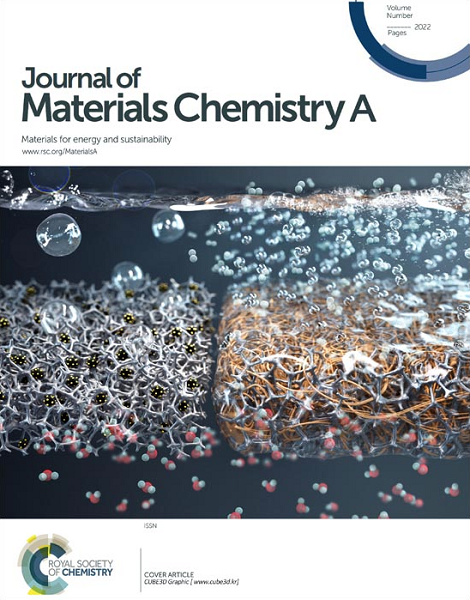金属-有机纳米笼通过三元氨基密码基和金属位点的协同作用增强氟的吸附
IF 9.5
2区 材料科学
Q1 CHEMISTRY, PHYSICAL
引用次数: 0
摘要
氟化工的快速发展造成了水源中严重的氟污染,经济高效的除氟仍然是一个严峻的挑战。在本研究中,通过逐步组装过程(i)苯胺在TiO2纳米管上的氧化聚合,然后(ii) uuo -66- nh2的原位溶剂热生长,合成了一种具有三元氨基隐式空腔和Ti/Zr双金属位的纳米笼材料PTiO2@UiO-66-NH2。该材料的氟吸附量为143.66 mg/g (298.15 K, pH = 3),超过了大多数报道的吸附剂,并且在5次再生循环中保持了89%的效率。结构表征(TEM, XPS, FTIR)证实了由氨基形成的独特三元氨基密码基,而DFT计算表明,它们的自适应电子色散效应使氟在金属位点上的吸附能势降低了49%(从4.36 eV降至2.23 eV),从而实现了协同增强。这项工作为通过电子结构驱动的活性位点合作设计高性能吸附剂提供了一种新的策略。本文章由计算机程序翻译,如有差异,请以英文原文为准。
Metal-organic nanocages enhance fluoride adsorption through the synergy of ternary amino cryptands and metal sites
The rapid development of the fluorine chemical industry has resulted in serious fluoride pollution in water sources and the cost-effective removal of fluoride remain a critical challenge. In this study, PTiO2@UiO-66-NH2, a nanocage material with ternary amino cryptands cavities and Ti/Zr dual-metal sites, was synthesized through a stepwise assembly process involving: (i) oxidative polymerization of aniline on TiO2 nanotubes, followed by (ii) in-situ solvothermal growth of UiO-66-NH2. The material exhibits a fluoride adsorption capacity of 143.66 mg/g (298.15 K, pH = 3), surpassing most reported adsorbents, and maintains >89% efficiency over 5 regeneration cycles. Structural characterization (TEM, XPS, FTIR) confirms the unique ternary amino cryptands formed by amino groups, while DFT calculations reveal that their self-adaptive electron dispersion effect reduces the energy barrier for fluoride adsorption on metal sites by 49% (from 4.36 eV to 2.23 eV), enabling synergistic enhancement. This work provides a new strategy for designing high-performance adsorbents through electronic-structure-driven active-site cooperation.
求助全文
通过发布文献求助,成功后即可免费获取论文全文。
去求助
来源期刊

Journal of Materials Chemistry A
CHEMISTRY, PHYSICAL-ENERGY & FUELS
CiteScore
19.50
自引率
5.00%
发文量
1892
审稿时长
1.5 months
期刊介绍:
The Journal of Materials Chemistry A, B & C covers a wide range of high-quality studies in the field of materials chemistry, with each section focusing on specific applications of the materials studied. Journal of Materials Chemistry A emphasizes applications in energy and sustainability, including topics such as artificial photosynthesis, batteries, and fuel cells. Journal of Materials Chemistry B focuses on applications in biology and medicine, while Journal of Materials Chemistry C covers applications in optical, magnetic, and electronic devices. Example topic areas within the scope of Journal of Materials Chemistry A include catalysis, green/sustainable materials, sensors, and water treatment, among others.
 求助内容:
求助内容: 应助结果提醒方式:
应助结果提醒方式:


